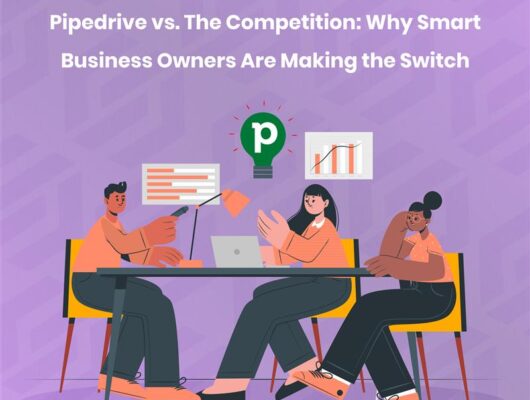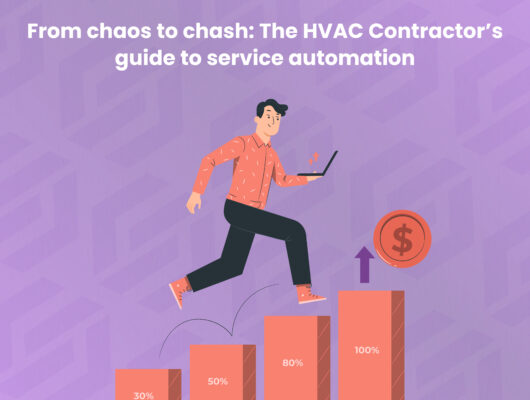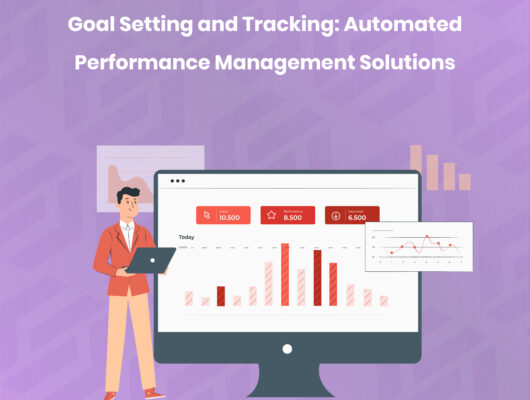Every great hire starts the same way—with an application. But what happens next often determines whether you’ll land that perfect candidate or watch them slip away to a competitor with a smoother process.
Consider this scenario: Sarah, a top-tier software engineer, applies to three companies on the same Monday morning. Company A sends an automated acknowledgment within minutes and schedules her phone screen for Wednesday. Company B’s HR team is overwhelmed and doesn’t respond until Friday. Company C’s application disappears into a black hole—no response at all.
Guess who gets Sarah’s signature on the offer letter?
This isn’t just about speed—it’s about building a systematic, automated candidate pipeline that nurtures every applicant from their first click to their first day of work. Companies with automated candidate pipelines see 70% faster time-to-hire, 50% higher offer acceptance rates, and 40% better new hire retention.
The question isn’t whether you need an automated pipeline—it’s how quickly you can build one.
The Broken Traditional Pipeline: Where Good Candidates Go to Die
The Current State of Candidate Experience
Recent studies reveal sobering truths about traditional hiring processes:
- 73% of candidates never hear back after submitting an application
- Average response time for initial contact: 7-14 days
- 58% of candidates abandon applications due to lengthy or complicated processes
- 42% of candidates report feeling “ghosted” during the hiring process
- Only 23% of candidates rate their overall experience as “excellent”
The Hidden Costs of Pipeline Breaks
Revenue Impact:
- Every day a position remains open costs companies $500-$2,000 in lost productivity
- Poor candidate experience damages employer brand, reducing future application rates by 20-30%
- Top candidates often have 3-5 offers; slow processes guarantee losses to competitors
Internal Resource Drain:
- HR teams spend 40% of their time on manual pipeline management
- Hiring managers lose track of candidates due to disjointed processes
- Administrative tasks overwhelm strategic recruiting activities
Compliance and Quality Risks:
- Manual processes increase errors in background checks and reference verification
- Inconsistent candidate evaluation leads to poor hiring decisions
- Documentation gaps create legal and compliance vulnerabilities
The Automated Pipeline Revolution: End-to-End Transformation
An automated candidate pipeline is more than just software—it’s a strategic system that guides every candidate through a consistent, engaging journey while optimizing each step for speed, quality, and experience.
Core Components of an Automated Pipeline
1. Intelligent Application Processing Modern pipelines begin with smart application capture that goes far beyond basic forms. AI-powered systems parse resumes, extract relevant data, and immediately categorize candidates based on qualifications and fit.
2. Dynamic Candidate Scoring Advanced algorithms evaluate candidates against role requirements, company culture indicators, and historical success patterns, providing immediate rankings and recommendations.
3. Automated Communication Workflows Personalized email sequences keep candidates engaged throughout the process, providing updates, next steps, and relevant company information at precisely the right moments.
4. Seamless Stage Progression Candidates automatically advance through pipeline stages based on predefined criteria, with notifications sent to relevant team members and tasks assigned appropriately.
5. Integrated Assessment Delivery Skills tests, personality assessments, and other evaluations are automatically delivered and scored, with results integrated into candidate profiles.
6. Intelligent Interview Coordination Building on automated scheduling, the pipeline coordinates complex multi-round interviews, panel availability, and candidate preferences seamlessly.
7. Reference and Background Automation Automated systems reach out to references, coordinate background checks, and compile results into comprehensive candidate profiles.
8. Offer Management and Negotiation Digital offer letters, electronic signatures, and automated follow-up ensure smooth offer processes with real-time status tracking.
9. Seamless Onboarding Transition Successful candidates automatically transition into onboarding workflows, with IT provisioning, paperwork completion, and first-day preparation handled systematically.
Industry-Specific Pipeline Configurations
Technology Companies
Unique Requirements:
- Technical skill assessments and coding challenges
- GitHub and portfolio integration
- Multiple technical interview rounds
- Remote candidate coordination
Automation Features:
- Automated coding challenge delivery and evaluation
- Technical skill matching and ranking
- Portfolio analysis and integration
- Virtual interview coordination across time zones
Financial Services
Unique Requirements:
- Extensive background checks and compliance verification
- Series licensing requirements
- Risk management assessments
- Regulatory approval processes
Automation Features:
- Automated compliance checking and documentation
- Series exam tracking and verification
- Risk assessment questionnaire delivery
- Regulatory approval workflow management
Healthcare Organizations
Unique Requirements:
- Medical license verification
- Credentialing and privileging processes
- Clinical skill assessments
- Joint Commission compliance
Automation Features:
- Medical license verification with real-time checking
- Automated credentialing workflow management
- Clinical competency assessment delivery
- Compliance documentation automation
Manufacturing and Industrial
Unique Requirements:
- Safety certification verification
- Skills-based assessments for technical roles
- Shift scheduling coordination
- Union considerations
Automation Features:
- Safety certification tracking and verification
- Hands-on skills assessment coordination
- Shift-aware scheduling and communication
- Union notification and compliance workflows
Building Your Automated Pipeline: Implementation Strategy
Phase 1: Current State Analysis and Design (Weeks 1-3)
Process Mapping:
- Document current candidate journey from application to onboarding
- Identify bottlenecks, delays, and friction points
- Map stakeholder involvement and responsibilities
- Analyze candidate feedback and experience data
Technology Assessment:
- Evaluate existing HR technology stack and integration capabilities
- Identify gaps in current automation and workflow tools
- Assess data quality and candidate information management
- Review compliance and security requirements
Pipeline Design:
- Create ideal candidate journey map with automation touchpoints
- Define stage criteria and automatic progression rules
- Design communication templates and timing schedules
- Establish measurement criteria and success metrics
Phase 2: Foundation Building (Weeks 4-8)
System Integration:
- Connect ATS with existing HR and business systems
- Implement candidate tracking and scoring algorithms
- Configure automated communication workflows
- Set up reporting and analytics dashboards
Content Development:
- Create personalized email templates for each pipeline stage
- Develop assessment questions and evaluation criteria
- Design candidate-facing portals and self-service tools
- Build training materials for hiring teams
Testing and Optimization:
- Run pilot programs with select positions and departments
- Test automation workflows with sample candidate data
- Refine scoring algorithms and progression criteria
- Optimize communication timing and content
Phase 3: Rollout and Training (Weeks 9-12)
Team Training:
- Train HR teams on new pipeline management tools
- Educate hiring managers on automated processes and their roles
- Provide candidate experience training for all stakeholders
- Create support documentation and troubleshooting guides
Gradual Implementation:
- Roll out automation for high-volume, standard positions first
- Gradually expand to more complex roles and specialized departments
- Monitor performance metrics and candidate feedback closely
- Make real-time adjustments based on initial results
Change Management:
- Communicate benefits and changes to all stakeholders
- Address concerns and resistance to new processes
- Celebrate early wins and success stories
- Establish feedback loops for continuous improvement
Phase 4: Optimization and Expansion (Weeks 13+)
Performance Monitoring:
- Track key metrics including time-to-hire, candidate satisfaction, and quality of hire
- Monitor automation effectiveness and identify improvement opportunities
- Analyze candidate drop-off points and optimize accordingly
- Review and refine scoring algorithms based on hiring outcomes
Advanced Feature Implementation:
- Add predictive analytics for candidate success probability
- Implement advanced AI features for resume parsing and matching
- Integrate video interviewing and assessment platforms
- Expand automation to include onboarding and early engagement
Advanced Pipeline Features and Innovations
Predictive Analytics Integration
Modern pipelines leverage machine learning to predict candidate success, likelihood of acceptance, and potential retention. These insights help prioritize efforts and optimize resource allocation.
Key Capabilities:
- Success probability scoring based on historical hiring data
- Acceptance likelihood prediction to prioritize high-probability candidates
- Retention risk assessment to identify potential early turnover
- Pipeline optimization recommendations based on performance data
Multi-Channel Integration
Advanced pipelines integrate multiple sourcing channels into a unified candidate experience, whether candidates apply through job boards, social media, referrals, or direct applications.
Channel Integration Benefits:
- Consistent experience regardless of application source
- Unified candidate profiles across all touchpoints
- Cross-channel attribution and source effectiveness tracking
- Automated candidate deduplication and profile merging
Real-Time Collaboration Tools
Modern pipelines include collaboration features that keep hiring teams aligned and informed throughout the process.
Collaboration Features:
- Real-time candidate evaluation and feedback sharing
- Automated stakeholder notifications and task assignments
- Collaborative decision-making tools and scorecards
- Integration with team communication platforms
Measuring Pipeline Success: KPIs That Matter
Efficiency Metrics
Time-to-Hire Reduction:
- Overall pipeline duration from application to offer acceptance
- Stage-specific timing (application to screen, interview to offer, etc.)
- Comparison across different roles and departments
Process Efficiency:
- HR time investment per hire
- Manual task elimination percentage
- Automation adoption rates across teams
Quality Metrics
Candidate Experience:
- Candidate satisfaction scores throughout the pipeline
- Application completion rates
- Candidate Net Promoter Score (NPS)
Hire Quality:
- New hire performance ratings at 90 days and 1 year
- Retention rates by pipeline source and process
- Hiring manager satisfaction with candidate quality
Business Impact Metrics
Cost Effectiveness:
- Cost per hire reduction
- Recruiting ROI improvement
- Agency and external recruiting cost savings
Strategic Impact:
- Offer acceptance rate improvements
- Employer brand strength indicators
- Competitive advantage in talent acquisition
Future of Automated Pipelines: Emerging Trends
AI-Powered Candidate Matching
Next-generation pipelines will use advanced AI to match candidates not just to job requirements, but to team dynamics, company culture, and long-term career trajectory.
Conversational AI Integration
Chatbots and virtual assistants will handle initial candidate interactions, answer questions, and guide candidates through early pipeline stages.
Video AI Analysis
Automated analysis of video interviews for communication skills, cultural fit indicators, and emotional intelligence assessment.
Blockchain-Enabled Verification
Secure, immutable verification of credentials, certifications, and work history through blockchain technology.
Taking Action: Your Pipeline Transformation Journey
The companies dominating talent acquisition aren’t the ones with the biggest recruiting budgets—they’re the ones with the most efficient, candidate-friendly pipelines. Every day you delay implementation is another day your competitors are capturing top talent while yours slip away.
Immediate Assessment Actions:
- Map Your Current Pipeline: Document every step from application to onboarding
- Calculate Your Pipeline Costs: Measure time investment, candidate drop-off rates, and hidden costs
- Survey Your Stakeholders: Get feedback from candidates, hiring managers, and HR teams
- Identify Quick Wins: Find the biggest bottlenecks that automation could solve immediately
Ready to Build Your Automated Pipeline?
The transformation from manual to automated candidate pipelines isn’t just about efficiency—it’s about creating competitive advantage in the war for talent. Companies with automated pipelines don’t just hire faster; they hire better candidates who stay longer and perform at higher levels.
Ready to transform your candidate pipeline?
Our HR automation specialists have helped hundreds of companies build world-class automated pipelines that deliver measurable results. From initial assessment to full implementation, we’ll guide you through every step of the transformation.





